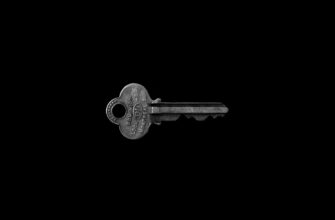🎮 Level Up with $RESOLV Airdrop!
💎 Grab your free $RESOLV tokens — no quests, just rewards!
🕹️ Register and claim within a month. It’s your bonus round!
🎯 No risk, just your shot at building crypto riches!
🎉 Early birds win the most — join the drop before it's game over!
🧩 Simple, fun, and potentially very profitable.
- Backup Account Offline for Beginners: Never Lose Your Digital Life
- Why Offline Backups Are Non-Negotiable for Beginners
- Beginner-Friendly Offline Backup Solutions
- Your First Offline Backup in 5 Simple Steps
- Smart Maintenance Habits for Offline Backups
- Common Beginner Mistakes to Avoid
- Offline Backup FAQ for Beginners
- How often should I update my offline backup?
- Can I use my phone for offline backups?
- Are offline backups really safer than cloud services?
- What’s the cheapest way to start?
- How long do offline backups last?
Backup Account Offline for Beginners: Never Lose Your Digital Life
Imagine losing years of photos, important documents, or work files in an instant. Scary, right? That’s why learning to create a backup account offline is crucial for every beginner. Unlike cloud backups, offline methods store your data on physical devices disconnected from the internet—making them immune to hacking, ransomware, or server crashes. This guide breaks down everything you need to start securing your data offline today, even if you’re a total tech newbie.
Why Offline Backups Are Non-Negotiable for Beginners
Relying solely on cloud services or your computer’s hard drive is risky. Here’s why an offline backup account should be your safety net:
- Cyberattack Protection: Offline copies can’t be hacked or encrypted by malware.
- Cost Efficiency: No recurring subscription fees—just a one-time hardware purchase.
- Full Control: You physically own the backup, with no third-party access.
- Disaster Recovery: Works during internet outages or cloud service failures.
Beginner-Friendly Offline Backup Solutions
Choose the right tool for your needs. Here are the top offline backup options:
- External Hard Drives (1-5TB): Affordable and spacious. Best for home users.
- USB Flash Drives (64GB-1TB): Portable for critical files. Keep multiple copies.
- Optical Media (DVDs/Blu-ray): Long-term archival. Ideal for photos.
- NAS (Network-Attached Storage): Advanced option for whole-home backups when disconnected after use.
Your First Offline Backup in 5 Simple Steps
Follow this foolproof process to create your initial backup account offline:
- Gather Files: Collect documents, photos, videos, and other irreplaceable data.
- Choose Storage: Start with an external hard drive (we recommend 2TB for beginners).
- Connect & Format: Plug into your computer. Format the drive if prompted (use exFAT for Windows/Mac compatibility).
- Copy Files Manually: Drag-and-drop folders to the drive. Organize into clear categories like “Taxes” or “Family Photos.”
- Safely Eject & Store: Unplug the drive and keep it in a dry, secure location away from your computer.
Pro Tip: Label your backup with the date (e.g., “Backup_Jan2024”) for easy tracking!
Smart Maintenance Habits for Offline Backups
Protect your investment with these best practices:
- Update Monthly: Add new files every 30 days. Set calendar reminders.
- Follow the 3-2-1 Rule: Keep 3 copies of data: 1 primary, 1 offline backup, and 1 off-site (e.g., at a friend’s house).
- Verify Backups: Every 6 months, check that files open correctly.
- Rotate Media: Replace hard drives every 3-5 years to prevent failure.
Common Beginner Mistakes to Avoid
Steer clear of these pitfalls when managing your backup account offline:
- Single Copy Syndrome: Never rely on just one backup drive—always duplicate.
- Neglecting Updates: Outdated backups miss critical recent files.
- Poor Storage Locations: Avoid damp basements or hot attics that damage hardware.
- Forgetting Encryption: Password-protect sensitive data (use BitLocker or FileVault).
Offline Backup FAQ for Beginners
How often should I update my offline backup?
Weekly for active projects, monthly for personal files. Sync after major life events (e.g., vacations or tax season).
Can I use my phone for offline backups?
Yes! Connect Android/iOS to a computer via USB, then transfer photos and files to an external drive. Avoid relying solely on phone storage.
Are offline backups really safer than cloud services?
For absolute security? Yes. Offline storage has zero hack risk. Cloud backups are convenient but vulnerable to breaches—use both for layered protection.
What’s the cheapest way to start?
A 128GB USB drive ($10-$20) works for essential documents. Scale up to a $60 2TB hard drive for full-system backups.
How long do offline backups last?
Hard drives: 3-5 years. USB drives: 5-10 years. Optical discs: 10-100+ years. Always refresh media periodically.
Final Tip: Start small—back up your most precious files today. Your future self will thank you when disaster strikes!
🎮 Level Up with $RESOLV Airdrop!
💎 Grab your free $RESOLV tokens — no quests, just rewards!
🕹️ Register and claim within a month. It’s your bonus round!
🎯 No risk, just your shot at building crypto riches!
🎉 Early birds win the most — join the drop before it's game over!
🧩 Simple, fun, and potentially very profitable.








